Okay, the first thing we will have to do with this plant is learn how to say its name! Rhipsalis mesembryanthemoides.
Or not! We can just call it the Clumpy Mistletoe Cactus and call it good. Anything to make life less stressful is fine with me. So, let’s move on and see what we can learn!
These epiphytic plants are noted for their tiny branchlets with long round green stems. These can grow to more than one and a half inches in length and more than one half an inch thick. They sometimes flower during the winter months. I’ve been able to get mine to flower these cute white flowers.

Table of Contents
Background and History
These plants are native to both Central and South America. They are also found in the Brazilian state of Rio de Janeiro on both sides of the Baja de Guanabara at an altitude of below 2,000 feet above sea level.
Besides the name Mistletoe Cactus, this plant is also referred to as a Coral Cactus and a Pencil Plant. If you look at the foliage on the plant, you can see why it is called these names!
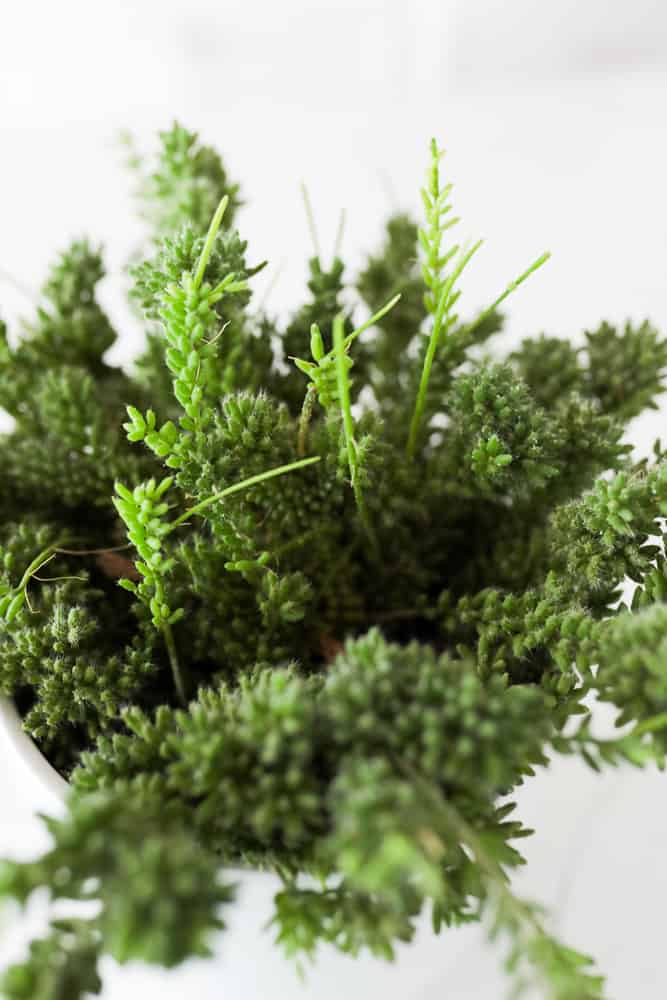
Toxicity
While the Mistletoe Cactus is overall non-toxic to both humans and animals, it is suggested that you keep it out of the reach of both small children and pets. While all parts of the plant are considered non-toxic, it may still cause mild stomach upset to a pet or young child.
Rhipsalis Mesembryanthemoides Care Tips
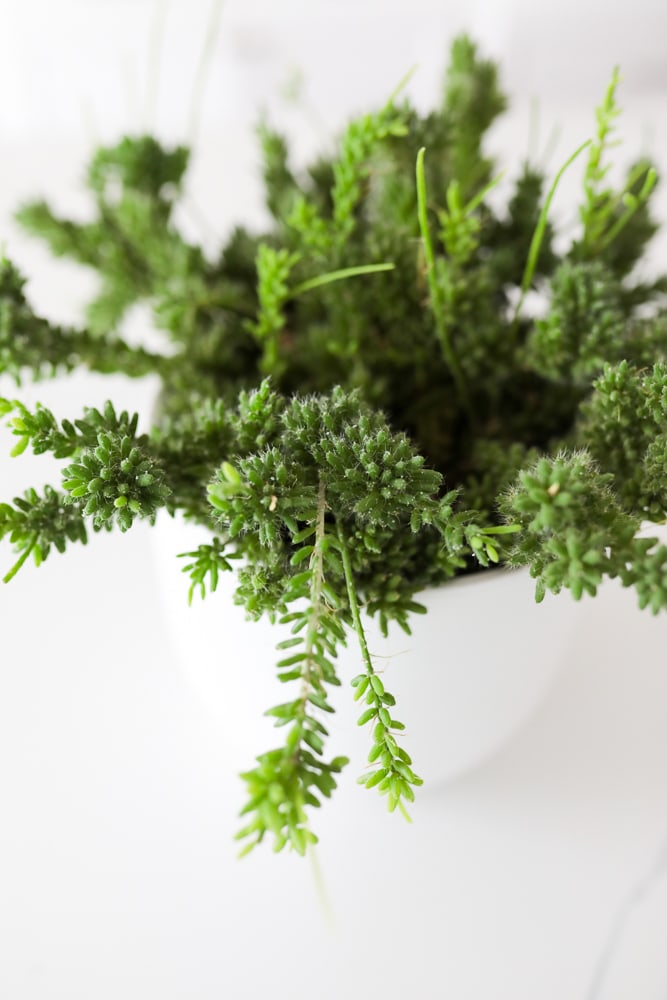
Watering Requirements
As with many succulent type plants, you will need to adjust the watering schedule as your house heats up and cools down with the seasons. If you have availability to rainwater, that would be ideal for watering your Mistletoe Cactus. They do not like hard water.
Be sure that you don’t overwater your plant as it does not like wet feet! Keep the soil moist, but not soggy. Let the top ½ inch of the soil dry out between waterings. If your plant does flower it’s small white blooms, water it only enough to keep the soil barely moist for a period of three to six weeks.
Always be sure there is great drainage and drainage holes in the bottom of the pot.
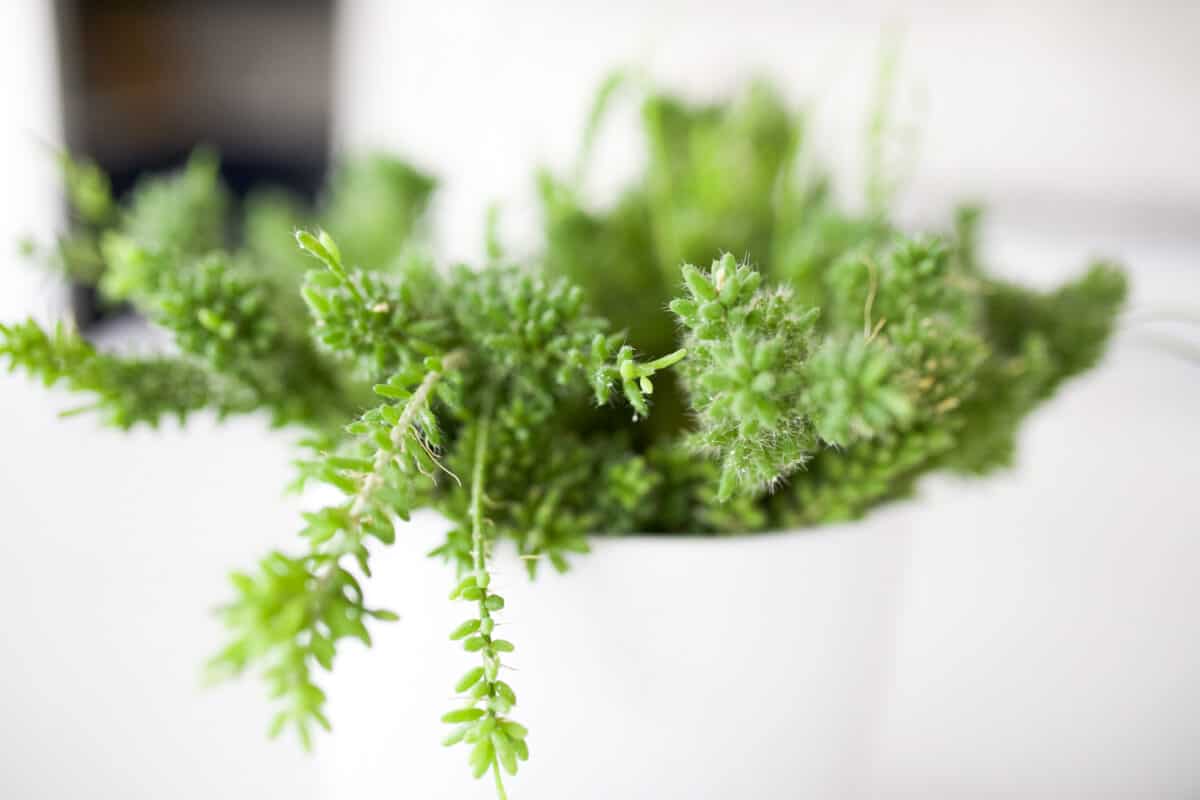
Light Requirements
One thing to remember about your Clumpy Mistletoe Cactus is that it does not like full bright sunlight. You should grow it in a place where it receives filtered light and only morning or evening sun.
If it is placed near a window, remember that the glass from the window can intensify the light it receives. Too much direct sunlight can scorch the leaves. A north or west facing windowsill or in a place where there isn’t direct sun is the ideal spot for your plant. I keep mine on a shelf just out of reach of both south and west facing light.
Soil Requirements
Even though your Mistletoe cactus can survive in normal potting soil, it would be a good idea to use a potting mixture that is made for its specific needs such as a succulent soil. Using a mix that is one part regular potting mix, one part orchid bark and one part perlite is a good mix of ingredients to allow for your plant to thrive.
This will allow your plant enough structure and nutrition from the mix and also allow the proper drainage it needs. This mix is fast draining, but it also will hold moisture longer than a desert cactus mix.
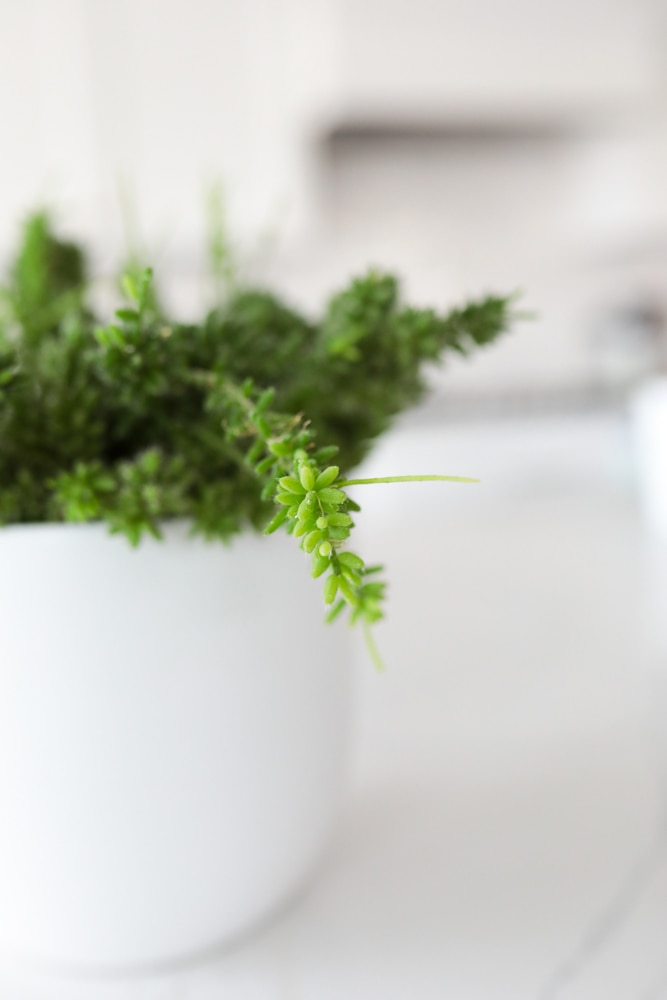
Fertilizer Requirements
Your Mistletoe Cactus will appreciate a light application of a diluted liquid fertilizer about once a month during the spring and summer months. This will help it throughout the growing season even though it actually thrives on the light it receives.
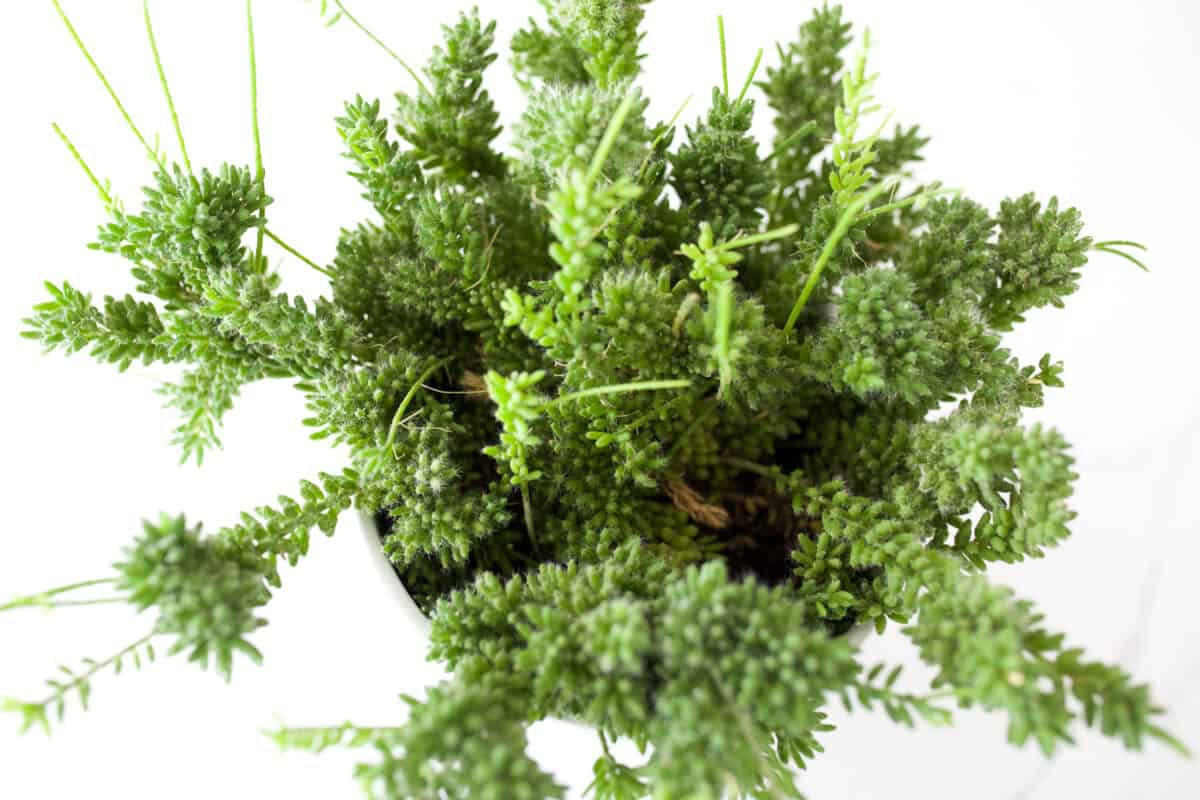
Temperature and Humidity Requirements
A temperature range of between 60 and 80 degrees F will work best for your Mistletoe Cactus. This is pretty much the same as an average household as far as a temperature range goes, so it is easy to have one of these plants in your home.
As far as humidity goes, keeping it between 55 and 75% is best. You will want to keep a close eye on this as the temperature and humidity tend to work together. A warmer environment can hold more moisture, so when a room gets warmer, you might need to increase the humidity. Regular misting will also keep your plant from drying out.
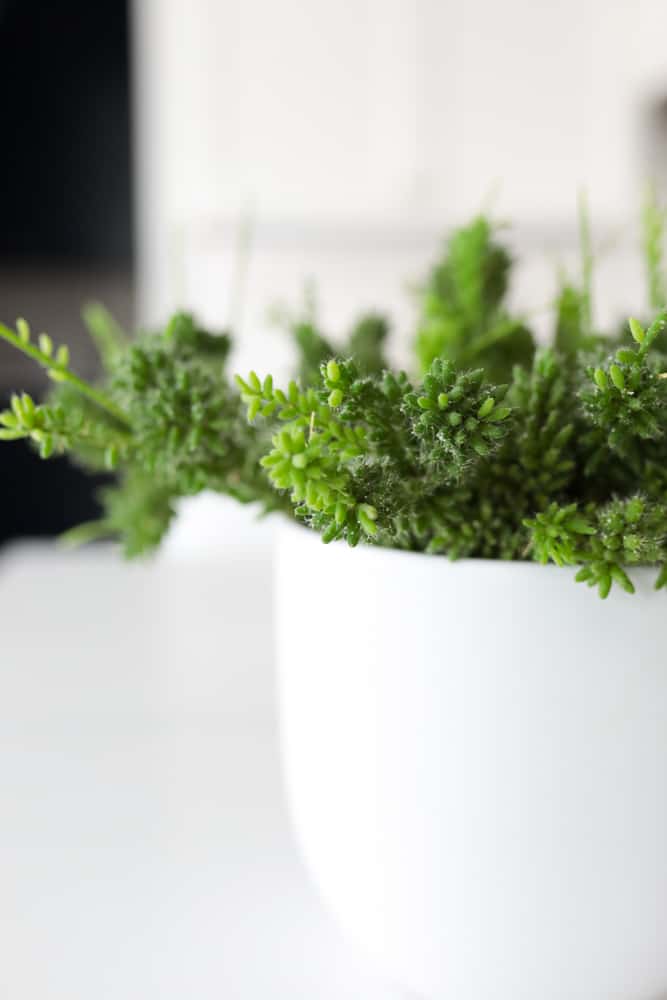
Pests and Diseases
Some of the most sneaky pests on Mistletoe Cactus can be the scale insects. They will cling on your cactus like little imobile bumps and you may not even notice them. If you see brown or white spots on the leaves and stems, then you should investigate further to see if they are scale insects.
Other common pests can be red spider mites, mealybugs and thrips. These are especially common in warm, dry conditions. There are also what is known as cactus bugs. These are brown to blackish bugs that are about a ½ inch long and have yellow markings on them. They feed on the plant and leave yellow-green rings.
The first thing to do is isolate your plant from any other plants in your collection to prevent the spread of pests. Using rubbing alcohol to treat these pests is a good place to start. If that doesn’t work, you can buy premade pesticide spray. After trying these methods, you may need to get rid of your plant. It will all depend on how quickly you have identified your pests and how quickly you have dealt with the problem.
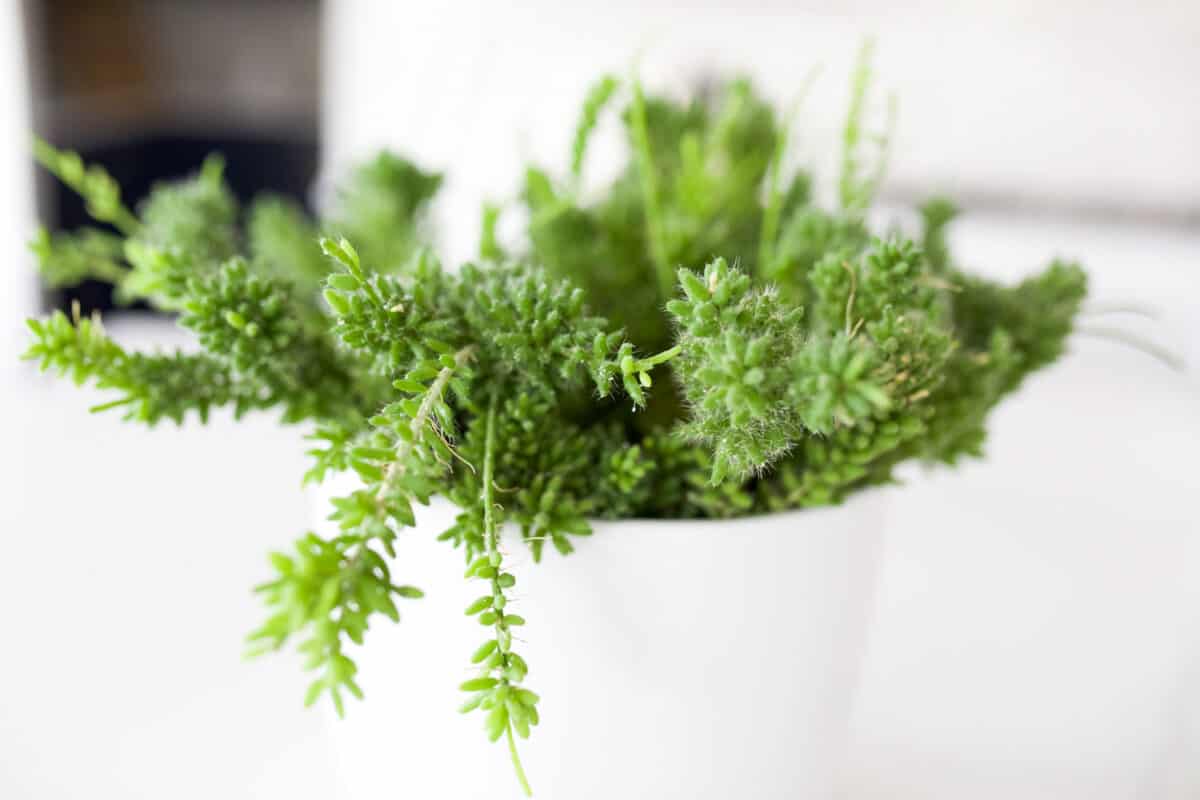
Pruning and Repotting
Your Clumpy Mistletoe Cactus will not need much pruning. It is a striking trailing plant and usually won’t need to be pruned unless it grows too large or long for the space it is in. Of course, you should always remove any withered or dead branches to keep the healthy part of the plant growing well.
As far as repotting goes, your plant will probably not need to be repotted more than every three years or so. Be sure to use a well draining, airy potting mix to allow for some moisture retention in the soil, but not too much. You can refer to the soil requirement paragraph above for which type of soil mixtures to use.
Common Problems
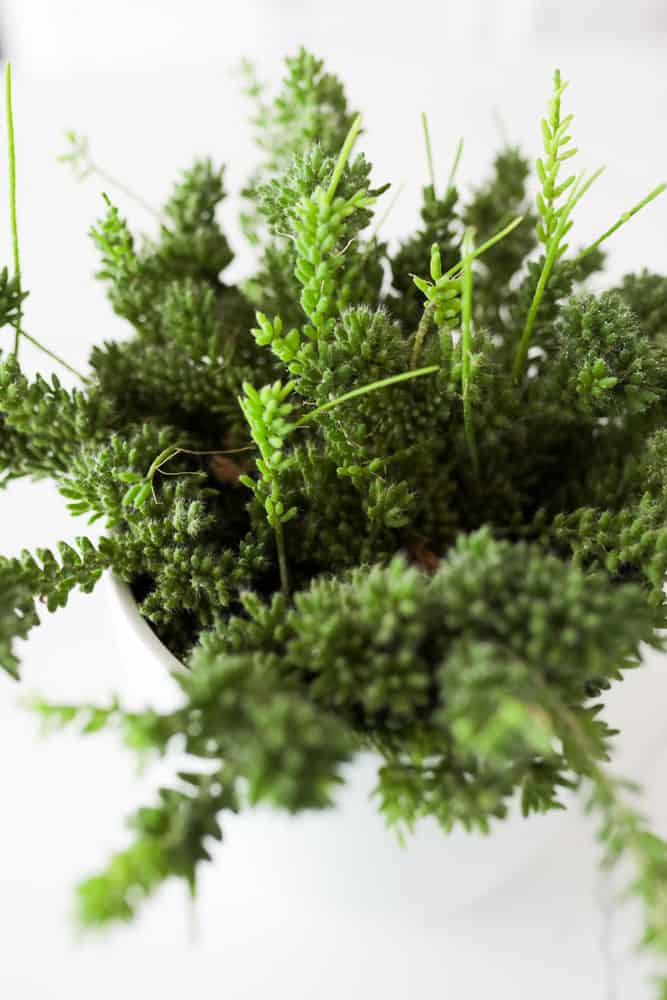
Wilting or Mushy Stems
If you notice either wilting stems or ones that are showing signs of mushiness at the base, this can be due to root rot. Soft succulents are a sign of sad succulents.
Unfortunately, there is no cure for root rot other than to remove the affected stems and rotted roots. Once you do this, you can repot your plant in another container. Be sure there is proper drainage so this doesn’t happen again.
Browning Tips
You may find that your plant has brown tips once in a while. If this is the case, it could be from underwatering your plant or a lack of humidity. Be sure your plant gets sufficient humidity and that it isn’t placed near a heating or cooling vent. Keep the soil evenly moist and allow the top inch or two of soil to dry out between waterings.
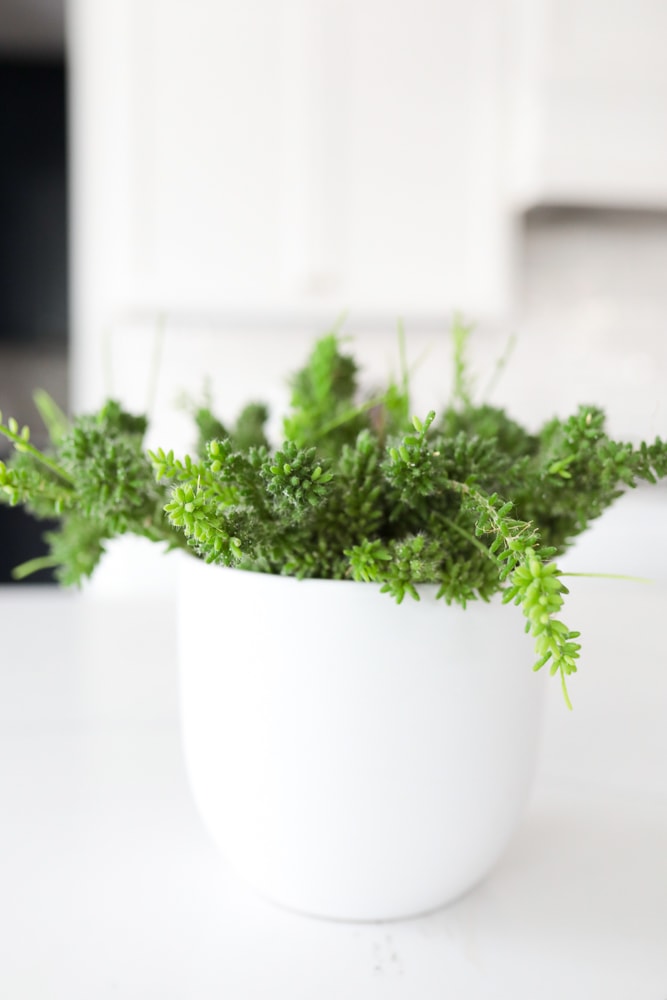
Yellow, Swollen Leaves
This can happen when your plant is overwatered. Sometimes the leaves will even burst. Check the soil to see how wet it is. If it feels like a wet sponge, then it is way too wet! You may need to repot the plant to save it from root rot, so check the roots as soon as possible.
Leggy Stems
This can be a sign of not enough light for your plant. Your plant will tend to grow toward the light source. Sometimes it may grow longer on one side than the other if it isn’t rotated on a regular basis.
Check to see if the light source reaches all sides of your plant and keep it from getting lopsided by stretching to reach the light. You can always use a grow light if necessary.
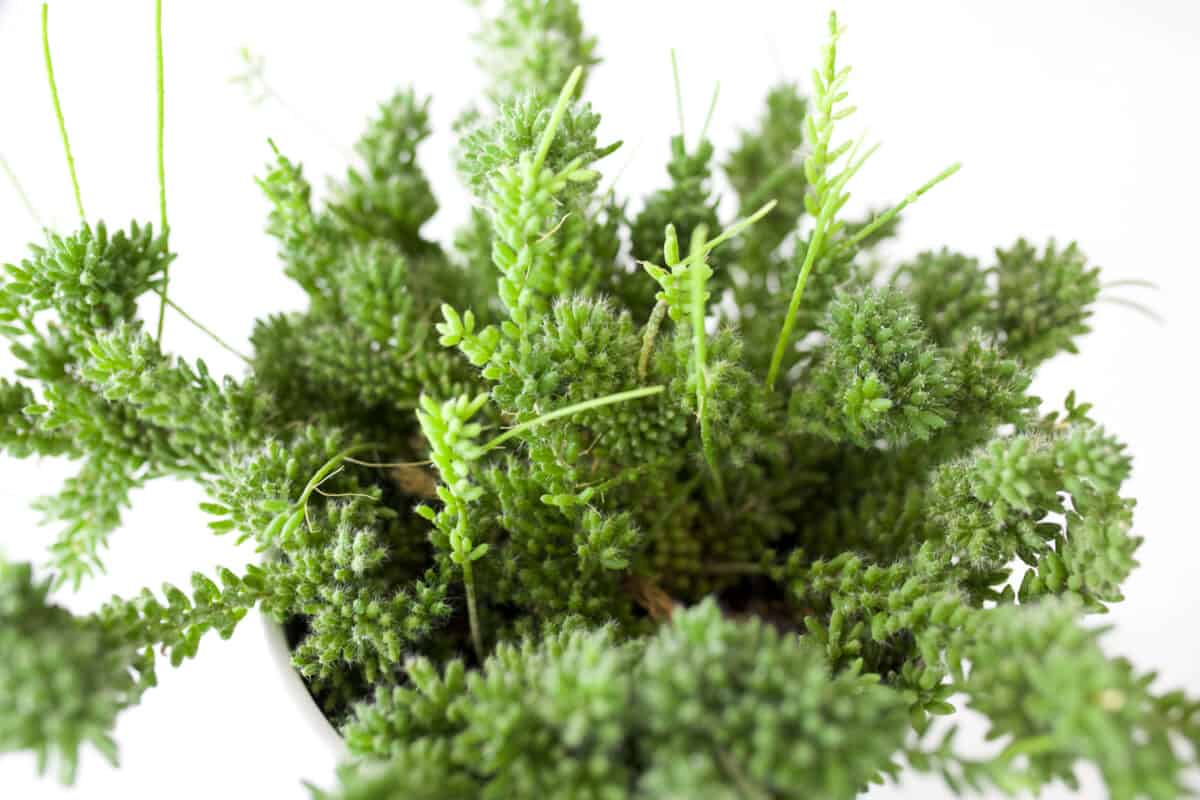
FAQs
It is considered a slow growing plant, so it will take a few years for it to become full and bushy. That is why you will probably only need to repot it once every three years.
This can be for several different reasons, but the most likely will be either from over or underwatering. Overwatering can lead to root rot and underwatering can lead to wilting leaves. Be sure to have a consistent schedule of watering so you prevent these conditions from happening.
Yes, you can grow it outdoors. It will need to be kept out of direct sunlight, however. It will grow best in a partly shaded area. They tend to grow best in a hanging pot or a pot on a high shelf where the long stems can trail and hang down.
In Conclusion
If you are looking to add another tropical succulent to your collection or just want a spectacular looking plant, the Clumpy Mistletoe Cactus might just be the ticket! They are not the most common plant to find, but can be purchased online if you can’t find one at your nearest nursery.
They are relatively easy to care for as long as you keep the temperature and humidity levels optimal. Maybe you have a nice, warm sunroom or a favorite spot in your living space that would love to display a beauty like this. As always, keep on growing!
